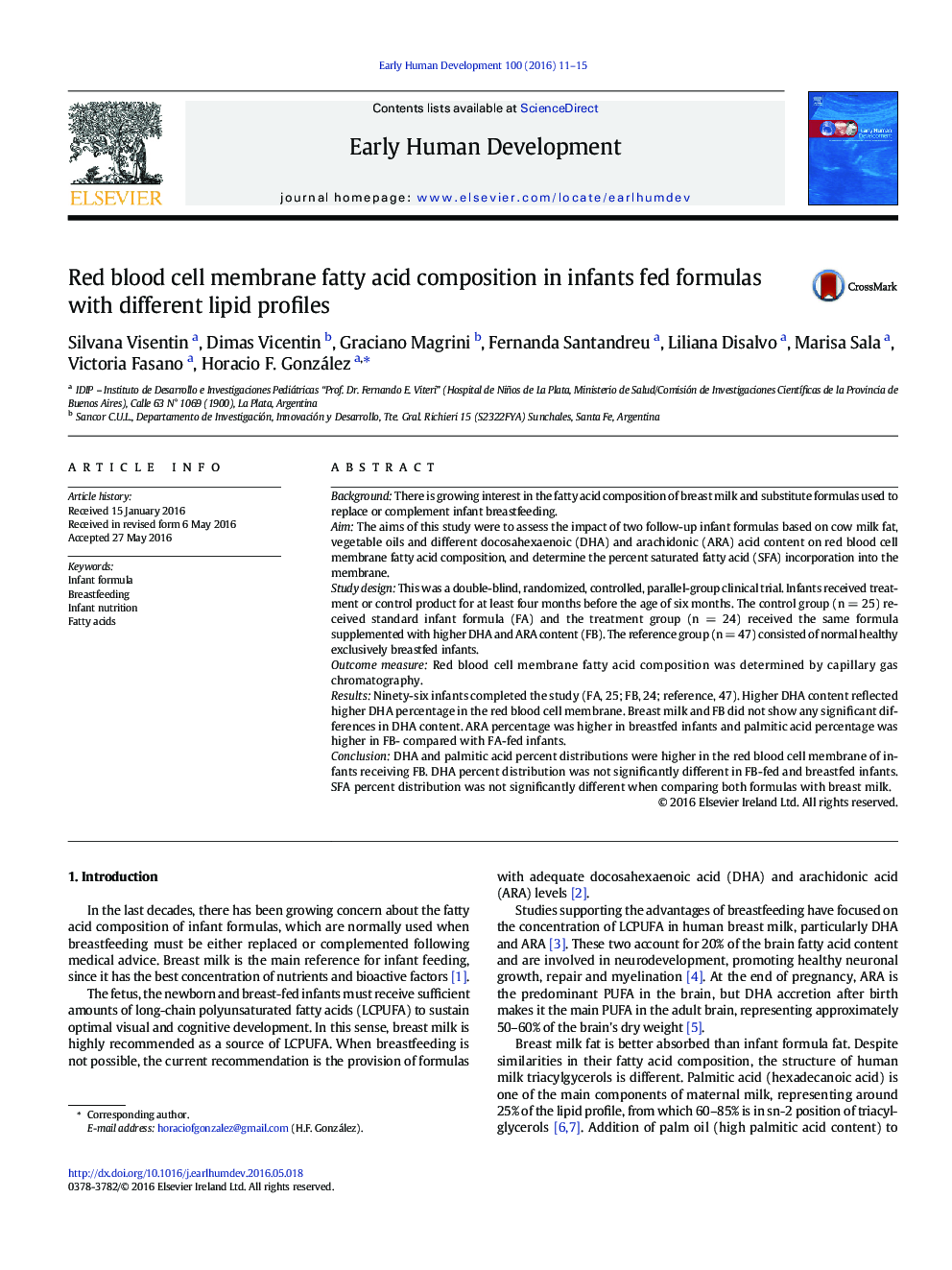| Article ID | Journal | Published Year | Pages | File Type |
|---|---|---|---|---|
| 6171793 | Early Human Development | 2016 | 5 Pages |
â¢Breastfeeding is essential for better neurodevelopmental outcomes and improved intellectual quotient.â¢Docosahexaenoic (DHA) and arachidonic (ARA) concentration in breast milk and substitute formulas play a key role.â¢Palmitic acid represents around 25% of the lipid profile, from which 60-85% is in sn-2 position of triacylglycerols.â¢Higher DHA content reflected higher DHA percentage in the red blood cell membrane.â¢DHA and palmitic acid percent distributions were higher in the formula with greater supplementation.
BackgroundThere is growing interest in the fatty acid composition of breast milk and substitute formulas used to replace or complement infant breastfeeding.AimThe aims of this study were to assess the impact of two follow-up infant formulas based on cow milk fat, vegetable oils and different docosahexaenoic (DHA) and arachidonic (ARA) acid content on red blood cell membrane fatty acid composition, and determine the percent saturated fatty acid (SFA) incorporation into the membrane.Study designThis was a double-blind, randomized, controlled, parallel-group clinical trial. Infants received treatment or control product for at least four months before the age of six months. The control group (n = 25) received standard infant formula (FA) and the treatment group (n = 24) received the same formula supplemented with higher DHA and ARA content (FB). The reference group (n = 47) consisted of normal healthy exclusively breastfed infants.Outcome measureRed blood cell membrane fatty acid composition was determined by capillary gas chromatography.ResultsNinety-six infants completed the study (FA, 25; FB, 24; reference, 47). Higher DHA content reflected higher DHA percentage in the red blood cell membrane. Breast milk and FB did not show any significant differences in DHA content. ARA percentage was higher in breastfed infants and palmitic acid percentage was higher in FB- compared with FA-fed infants.ConclusionDHA and palmitic acid percent distributions were higher in the red blood cell membrane of infants receiving FB. DHA percent distribution was not significantly different in FB-fed and breastfed infants. SFA percent distribution was not significantly different when comparing both formulas with breast milk.
